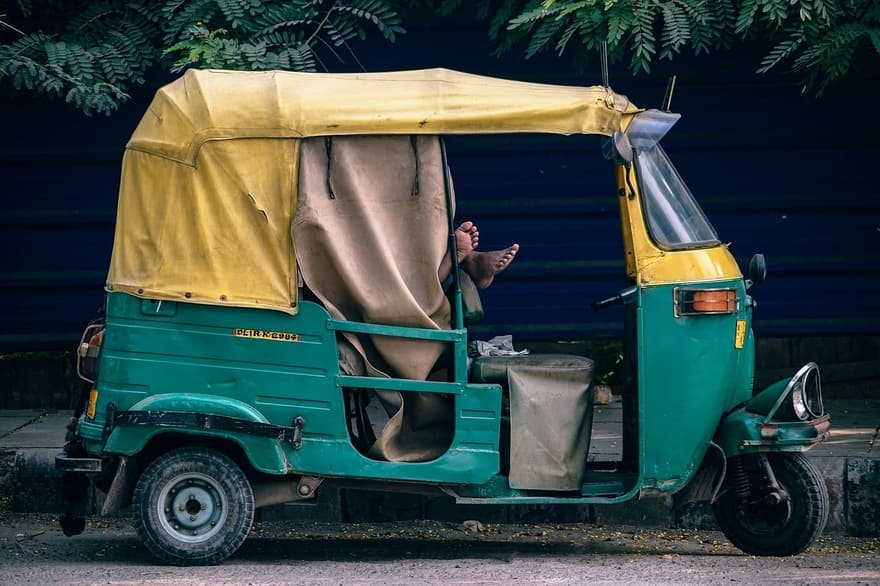Complete Vietnam Travel Guide



Vietnam travel
Vietnam is now one of the most popular travel destinations in Asia or especially in Southeast Asia. From the long coastline along with the beautiful beaches in the south, the amazing mountain range in the north to the rural paradise island “Phu Quoc” and the spectacular natural landscapes of the rice terrace. Vietnam has every sign of being one of the best among travelers. However, before you can create a travel plan, you must first know the basics about Vietnam Visa For Canadians and currency.
1. How many banknotes are there officially in Vietnam?
The official Vietnam currency is the Dong (VND). Today, there are a total of 10 banknotes, including the following 500 VND, 1,000 VND, 2,000 VND, 5,000 VND, 10,000 VND, 20,000 VND, 50,000 VND, 100,000 VND, 200,000 VND and 500,000 VND as the most valuable banknote.
The banknotes 500 VND, 1,000 VND, 2,000 VND, and 5,000 VND are made of paper, while the remnants are made of polymer to prevent damage.
Coins issued in 2003 are no longer available since 2011. The reasons for this are: The color of the coins is not good, the quality is bad and the Vietnamese do not want to carry the coins because they are very heavy. It may be normal for Westerners to use coins in their country, but do not be surprised if you do not see any in Vietnam.
A little detail that we would like to mention is this: Since 1978, the Dong (VND) has been the official currency in Vietnam. 1 VND has the same value as 10 Hao or 100 Xu (the former currency used in colonial times). However, Hao or Xu is no longer used today because the value of these coins is too low.
Regular banknotes mentioned above are used on a regular basis, except for the 500 VND Note, which also has a low value. It is often given to you like a change in the supermarket.
2. Where can you change the Vietnam currency?
In big banks in Vietnam:
Vietcombank (vietcombank.com.vn)
Vietinbank (vietinbank.vn)
BIDV (bidv.com.vn)
Sacombank (sacombank.com.vn)
Techcombank (techcombank.com.vn)
Current exchange rate of the Vietnamese currency: (11/2019)
1 Euro = 25,490.19 VND
1 US $ = 23,134.84 VND
In places where there are many tourists you can change the currency:
If you do not feel comfortable in the bank and need money on the go, you can swap money in small shops in Hang Bac, Ha Trung Road – Hanoi or De Tham, Bui Vien in Ho Chi Minh City, etc. Almost all shops and restaurants in Vietnam today accept payment by credit card (Visa), but you should not expect to use it while enjoying delicious Vietnam street food on a plastic stool on the sidewalk. Please note that the best way is still to prepare and change enough money before you travel.
3. Tips for Payment of Vietnam Travel:
- ATMs in Vietnam (ATMs) usually accept common card formats such as Visa, Mastercard, JCB, American Express. If you withdraw, fees may apply. Do not forget to take a close look at ATM withdrawals.
- Many of the hotels, restaurants and travel agencies accept credit cards but require a 2-3% surcharge for this service. In special situations you can pay in hotels, restaurants or shops in Euro or US dollars, but with a lower value. It should be noted that your home currency should not be damaged, wrinkled, marked or otherwise unacceptable.
- Currency exchange at the banks does not get you as much as the market. But it is safer and is often recommended.
Buying online products is often cheaper. The best-known online retailers in Vietnam are adayroi (adayroi.com), Tiki (tiki.vn). There you will find everything you need when traveling in Vietnam. Most deliver door to door delivery in 24 hours working days. They also accept credit cards (Mastercard, Visa) and cash. However, this is not recommended as the delivery time may vary depending on the location.
4. Be open.


traveling to Vietnam
The continued presence of foreigners in Vietnam suggests that many locals are not as interested in visitors or customers as some of their counterparts in Cambodia, Myanmar, and Laos. In addition, since most Vietnamese are not sure about spoken English, even though they study it at school, people tend to ignore lost foreigners if you are not really asking for specific help. But rest assured that the Vietnamese are really friendly people. If you ask someone a question with a smile and in slow, clear English, you will almost certainly get an answer. Simple phrases such as in chào (“hi”, pronounced “sin chow”) and cám ơn (“thank you”, pronounced “karma uhn”) are of great importance.
5. Keep in touch
Although most hotels, cafes, and restaurants have Wi-Fi, you can easily buy a SIM card and connect to the Internet for only $ 3. The names of the Vietnamese streets are known to belong (most are named after people), so for many travelers, digital navigators and maps are preferable to paper ones. You will also find that having a local phone number is convenient for meeting with guides and making last-minute reservations on the go. SIM cards are widely sold in stores everywhere and are easy to top up. After the purchase, the card must be registered on the network, which can be difficult, so ask the seller to do it for you.
Street food is one of the attractions of Vietnam – and here you will need cash to pay for it
6. Beware of taxi fraud


Vietnam travel guide
For many, motorcycle taxis are the best way to see the streets of Hanoi and Ho Chi Minh City. However, fraud can happen, and your best defense is a decent knowledge of where you are going and signs on the way. Always agree on a price in advance and be prepared for the fact that prices will be higher than those of local residents. For regular taxis, stick with the two main companies Mai Linh and Vinasun (both have apps). Small independent taxis are known for fast driving and aggressive drivers. If you are in one of the major cities, applications for comfortable trips, such as Uber and Grab, offering both car and motorcycle taxis, are good. Sometimes the driver will call to confirm the order, so having a friend speaking a Vietnamese language nearby will come in handy.
Rice terraces in Lao Cai province, near the Chinese border. Regular flights of buses, trains, and airplanes make traveling around Vietnam relatively easy.
7. Consider transport options.


Vietnam tourists
Night buses are a good way to travel long distances and save on living costs. However, the seating areas do not provide much legroom, so tall passengers will not be able to fully stretch out in comfort. At the same time, the upper shelves suggest a bit more personal space but can be at the height of street lamps.
Sleep masks and noise-canceling headphones are recommended (especially if the bus plays music or shows movies). Sometimes it’s easier to pay a few more dollars and use the plane. There are several low-cost airlines in Vietnam that offer cheap fares but are notorious for being late. The national airline, Vietnam Airlines, has the best service and reasonable prices with prior reservation.
8. Monitor your surroundings
Cruel crimes are extremely rare in Vietnam, the use of firearms is strictly regulated by law. But seizures and, to a lesser extent, theft, do happen. While on the street, use your phone and other electronics carefully (even while sitting in a cafe, on the sidewalk, or in the back seat of a motorcycle). Leave your passport at the hotel – there is rarely a reason to have the original with you. In addition, although Vietnam has the cheapest beer in the world, be careful with busting. A drunken tourist returning to his hotel in the morning when there is little transport around can be seen as an easy target. If you get home late in the evening, then spend an extra dollar or two on a taxi instead of a motorcycle.
The abundance of scooters and heavy traffic can make crossing city streets scary at first.
9. Road safety
Traffic in Hanoi and Ho Chi Minh City at first glance may seem horrific. Just walking down the street during rush hour can be an impossible task! But there is a way to get rid of madness, and like a school of fish, the movement will inevitably glide around you as you continue to move at a slow and steady pace. If you are not sure, do as the locals and raise one hand high so that you can be seen above the sea of helmets.
If you want to drive a motorcycle yourself, it is best to use it for riding in quiet places such as Hoi An, Dalat or Fukuoka. Always wear a helmet and remember the exhaust pipe, which can cause multiple burns to the legs. Since motorbikes tend to move close to each other, keep your legs pointing inward and consider putting on closed boots that provide extra protection for your legs.


Traveling to Vietnam